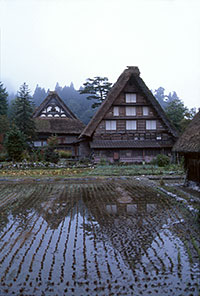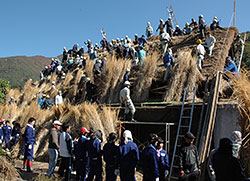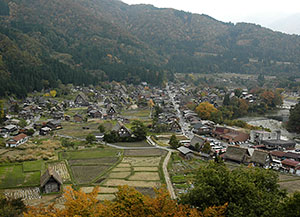Kids Web Japan
Web Japan > Kids Web Japan > Meet the Kids > Shirakawa > World Heritage
Meet the Kids
Shirakawa Junior High School
A World Heritage Site

(Shirakawa Village Office)
In December 1995 the Historic Villages of Shirakawa-go and Gokayama were added to the list of UNESCO World Heritage sites. The villages are home to beautiful Gassho-style thatched farmhouses built during the Edo period (1603-1868) and scenes of rural Japan from a bygone era.
World Heritage sites are found throughout the world and include historic buildings, landscapes, and nature that are considered to have universal value. The movement to preserve them got underway in 1972, with the adoption of the Convention Concerning the Protection of the World Cultural and Natural Heritage. The World Heritage list features 14 sites in Japan: 11 cultural sites, including Shirakawa-go, and 3 natural sites.

The job of rethatching a roof requires transporting a tremendous amount of pampas grass and many helping hands. In Shirakawa, a system of labor exchange called yui has been used since olden times for this purpose. When a roof needs to be replaced, the head of the house pays a call on all the other families in the village and asks them for their help. Anywhere from a few dozen to 200 people then band together, completing the job in just one day.
The person who has received assistance later helps other families when they replace their own roofs. This give and take has made it possible to have each house reroofed every few decades, despite the magnitude of the task.

As many as 300 Gassho-style houses once stood in Shirakawa, but the number dwindled as houses were abandoned for the construction of dams and people moved away to the city, and it was feared this traditional culture would be lost. The residents of Ogimachi, the village in Shirakawa-go where the Gassho-style structures are located, came together and launched a drive to preserve the traditions of the village. Thanks to their efforts, 113 Gassho-style buildings continue to stand today, and beautiful rural scenes and vestiges of traditional farm life can still be found.